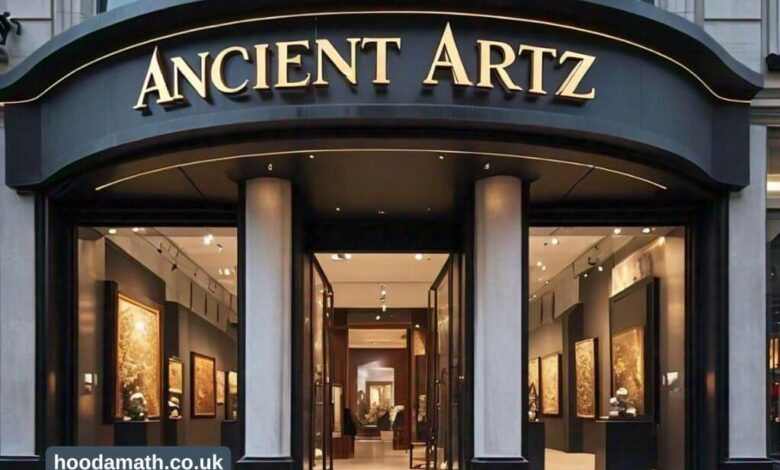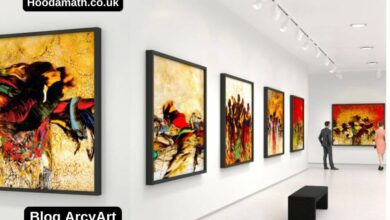Uncovering Ancient Artz: Hidden Stories of Timeless Masterpieces

Introduction to Ancient Artz
Ancient Artz takes us back to the earliest forms of human creativity. Art has always been a reflection of society, culture, and beliefs. The term “Ancient Artz” often refers to the art produced in various early civilizations, each with unique styles, techniques, and purposes.
In this guide, we’ll dive into the depths of ancient art from around the world, explore its forms, and understand its significance in shaping our history.
What is Ancient Artz?
Ancient Artz refers to visual arts created by early civilizations. These works include carvings, paintings, sculptures, pottery, and jewelry crafted by early humans. Each piece reflects the values, beliefs, and lifestyles of these ancient communities.
Some well-known ancient art forms come from Egypt, Mesopotamia, Greece, Rome, India, and China. Despite differences in style and technique, ancient art across cultures shares one thing in common: it often served as a bridge between the spiritual and physical worlds. Click Here
Key Characteristics of Ancient Artz
- Symbolism: Art in ancient times often had symbolic meanings. For instance, Egyptian hieroglyphics were not just pictures but symbols that told stories.
- Religious Influence: Many ancient artworks have religious or spiritual meanings. They represent gods, mythological creatures, and sacred rituals.
- Natural Elements: Ancient artists used natural materials like clay, stone, and wood, which were available around them.
- Focus on Human Figures: Many ancient artworks depict gods, leaders, and everyday people, often representing the values and beliefs of society.
Major Types of Ancient Artz
Ancient art spans a wide array of types and techniques. Let’s explore some of the key categories:
1. Sculpture
Sculptures in ancient art were often created for religious or ceremonial purposes. Cultures like the Egyptians and Greeks excelled in sculpture. These works were often life-sized, carefully detailed, and usually made from stone, marble, or bronze.
- Egyptian Sculptures: The famous Egyptian sculptures include the Sphinx and statues of pharaohs. These sculptures were meant to preserve the pharaoh’s image for eternity.
- Greek Sculptures: Greek sculptures, such as those found in temples, focused on idealized human forms and were influential in Western art history.
2. Pottery
Pottery in ancient civilizations was both functional and decorative. Ancient pottery often depicted scenes of daily life, myths, and animals. Pottery pieces give us a glimpse into the lifestyle and beliefs of these early societies.
- Greek Pottery: Greek pottery often featured scenes from mythology and daily life. Artists used red and black paints to create intricate designs.
- Chinese Pottery: Chinese pottery, such as the Terracotta Army, represents the skill and precision of ancient Chinese artisans.
3. Painting and Murals
Ancient paintings were often found on the walls of temples, tombs, and caves. These paintings depicted religious rituals, gods, and daily life. The colors used in ancient paintings came from natural pigments like clay, minerals, and plants.
- Egyptian Wall Paintings: Egyptian tombs are known for their elaborate wall paintings that tell stories of the deceased’s life and the journey to the afterlife.
- Indian Cave Paintings: Indian cave paintings, such as those in the Ajanta Caves, display Buddhist themes and scenes of royal life.
4. Jewelry and Ornaments
Ancient civilizations also excelled in jewelry making. Jewelry was not only a symbol of wealth but also held religious significance. Materials like gold, silver, and gemstones were used to craft beautiful pieces that are still admired today.
- Mesopotamian Jewelry: Mesopotamians were skilled in jewelry making, using intricate designs and valuable materials like lapis lazuli.
- Egyptian Jewelry: The Egyptians created iconic pieces such as the wide, collar necklaces adorned with colorful stones. Read More
Cultural Significance of Ancient Artz
Ancient art is a treasure trove of cultural history. Each piece of ancient art offers insight into the social structure, religious beliefs, and daily activities of early civilizations.
Spiritual Connection
For many ancient societies, art was a means of connecting with the divine. Temples, sculptures, and paintings often depicted gods, goddesses, and mythological tales. For example, the Greeks created sculptures of gods like Zeus and Athena, while Egyptians built temples for gods like Ra and Osiris.
Social and Political Messages
Art also served as a tool for social and political messages. Pharaohs in Egypt commissioned sculptures and murals to assert their authority and divine connection. Similarly, Roman emperors used sculptures to celebrate military victories and communicate their power to the public.
Preservation of Knowledge
Ancient artworks served as records of knowledge and beliefs. For instance, the Egyptian hieroglyphics and Mesopotamian cuneiform tablets hold valuable information about their writing, science, and religion.
Evolution of Ancient Artz Across Different Civilizations
The styles and techniques of ancient art evolved based on the resources, beliefs, and goals of each civilization. Here’s a look at how some major cultures contributed to ancient art.
Egyptian Art
Egyptian art is characterized by its symbolic and stylized nature. It focused on portraying figures in a formalized manner, often adhering to strict proportions and rules. Egyptians believed in the afterlife, which is evident in their tomb paintings, hieroglyphics, and sculptures.
Greek Art
Greek art is renowned for its emphasis on realism and the ideal human form. Ancient Greek artists explored themes of beauty, philosophy, and heroism. Greek sculptures are highly detailed and focus on anatomical accuracy, which influenced many Western art movements.
Mesopotamian Art
Mesopotamian art is among the oldest forms of ancient art. Known for their sculptures, bas-reliefs, and jewelry, the people of Mesopotamia created intricate designs with religious and mythological significance.
Chinese Art
Chinese art evolved with a strong focus on nature and spiritual symbolism. Ancient Chinese artists created pottery, calligraphy, and paintings that reflected harmony with nature and the universe.
Indian Art
Indian art spans diverse styles, with a deep connection to religion and spirituality. The famous Ajanta Cave paintings and ancient sculptures in temples depict the richness of Indian culture and its emphasis on storytelling. Visit Here
Why is Ancient Artz Important Today?
Ancient Artz is not only a part of our history; it’s a foundation for understanding human culture and progress. Studying ancient art offers a sense of continuity and connection with the past.
Learning from History
Ancient artworks allow us to learn about early human civilizations and their innovations. They reveal how people interacted with nature, expressed their beliefs, and developed complex societies.
Influence on Modern Art
Many modern art forms are influenced by ancient art styles. Techniques, motifs, and symbols from ancient times are often incorporated into contemporary art, preserving the legacy of ancient civilizations.
FAQs about Ancient Artz
1. What is Ancient Artz?
Ancient Artz refers to visual arts created by early civilizations such as Egypt, Mesopotamia, Greece, China, and India. It includes sculptures, paintings, pottery, and jewelry that reflect the culture, beliefs, and society of these times.
2. Why was ancient art created?
Ancient art was created for various purposes, including religious ceremonies, social messages, recording history, and as a form of expression. It also helped ancient people connect with the divine and communicate ideas.
3. What are some famous examples of Ancient Artz?
Some famous examples include the Pyramids of Egypt, Greek sculptures like the Venus de Milo, the Terracotta Army in China, and the murals of the Ajanta Caves in India.
4. How does ancient art influence modern art?
Ancient art influences modern art through its themes, symbolism, and techniques. Many artists today draw inspiration from ancient art forms to express cultural heritage and historical continuity.
5. How did ancient artists create colors?
Ancient artists used natural pigments from plants, minerals, and other materials to create colors. For example, they used ochre for red and yellow tones, and charcoal for black.
6. Why is Ancient Artz significant today?
Ancient Artz holds cultural, historical, and educational value. It helps us understand the development of human society, creativity, and spirituality, connecting us to our ancestral roots.
Conclusion
Ancient Artz offers a window into the lives of early civilizations, showcasing their creativity, beliefs, and innovations. These artistic expressions reflect human experiences and highlight the connections between culture, religion, and social identity. By studying ancient art, we gain valuable insights into our past and enrich our understanding of the present.
Ancient Artz is a testament to humanity’s desire to create, communicate, and connect across time. Let’s continue to appreciate, preserve, and learn from these remarkable relics of history.




